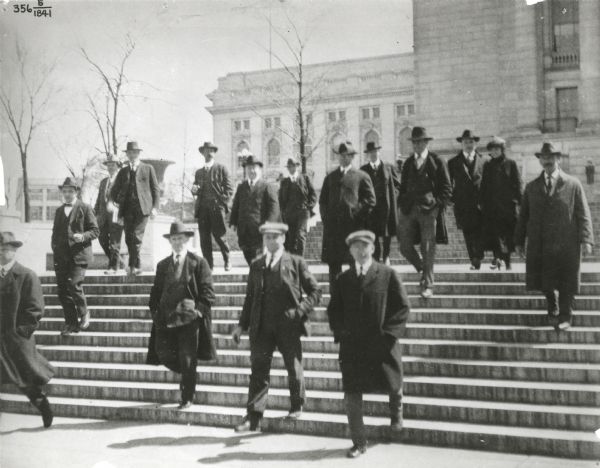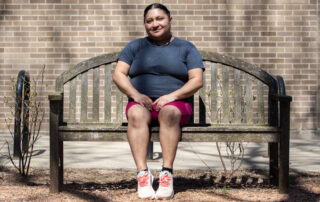Wisconsin has a rich history in politics that has influenced many of the nation’s major political movements. Contributor Eric Dregni takes a look at Wisconsin’s connection to socialism.
===
I grew up hearing how dangerous socialists were. After all, the Cold War against the U.S.S.R. could turn hot if we didn’t root out the communists in our midst, as Joe McCarthy warned.
Then I lived in “socialist” Norway and my wife gave birth to our first baby there. The Norwegian health care covered the birth and gave us five thousand dollars to help raise the baby and would deposit $150 into our bank account every month until our son was 18.
This democratic socialist government paid for my year of college in Trondheim, paid our health care, and would pay our pension, if we had stayed. These socialists certainly didn’t seem so dicey after all. They seemed positively civil.
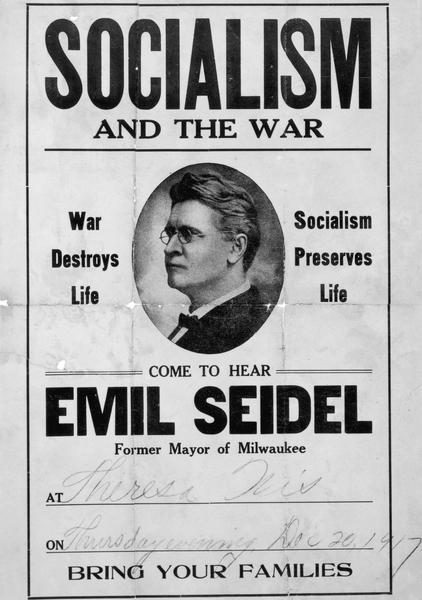
Poster publicizing a speech on Socialism by Emil Seidel, former mayor of Milwaukee. (Courtesy of Wisconsin Historical Society)
Some American politicians invoke Scandinavian socialism as a model for the U.S., but I suggest we just look to Wisconsin. Our state has a long history of alternatives to for-profit corporations in the form of owner-operated cooperatives and profit-sharing credit unions. Milwaukee even elected three socialist mayors.
German visionaries in Milwaukee dreamed of a “cooperative commonwealth” rather than cut-throat capitalism and succeeded in electing socialist mayors that served most of the period between 1910 and 1960.
Milwaukee’s socialist mayor, Emil Seidel, even lured Pulitzer Prize-winning poet Carl Sandburg to work for him. Inspired by the progressive politics, Sandburg went on to win two Pulitzer Prizes and was known for such lines as “Sometime they’ll give a war and nobody will come.”
Wisconsin may have had its share of socialist mayors, but the most influential progressive was likely Thorstein Veblen, born in Cato, Wisconsin as the son of Norwegian immigrants. He viciously criticized cutthroat American capitalism and became an inspiration for socialists with his famous warnings of “conspicuous consumption.”
He predicted that the predatory practices of the banks would cause the market crash of 1929 and his book The Theory of the Leisure Class became the impetus for the Roosevelt revitalization package for the U.S., better known as the socialist-leaning New Deal.
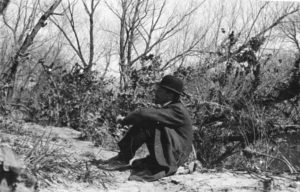
Thorstein Veblen, seated on the ground outdoors amongst bushes and trees. He is wearing a suit and bowler hat. (Courtesy of Wisconsin Historical Society)
Recent Nordic arrivals, like Veblen’s parents, didn’t want to be fleeced by the landed gentry who owned the banks and big businesses. Baptist minister Lars Jørgensen Hauge witnessed a poor Danish-American woman break down in tears after she was given just five cents a pound for her sweet cream butter and then only in trade at the company store.
Hauge remembered the cooperative creameries back in Denmark, so he traveled the Midwest preaching his “butter sermons” pushing the farmers to share their wealth with each other by forming cooperatives.
The cooperative ideal spread throughout the Midwest and expanded to general stores, food markets, gas and electrical operations, agricultural elevators, and banks (as credit unions). These coops offer an alternative system that allows all members to have a stake in the greater good rather than working just for the wealthy.
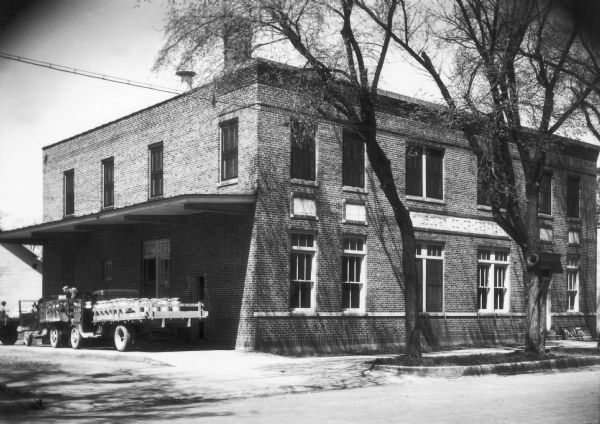
Exterior view of the Kilbourn Cooperative Creamery on Superior Street in Wisconsin Dells. (Courtesy of Wisconsin Historical Society)
Superior, Wisconsin boasted its Cooperative Central Exchange set up by Finns that gave added buying power for coop stores and offered scholarships to kids to “Cooperative Youth Camps.”
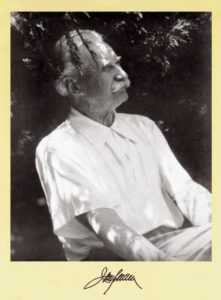
Jens Jensen, world famous landscape architect who pioneered the use of indigenous vegetation in his designs, at Ellison Bay, Wisconsin. (Courtesy of Wisconsin Historical Society)
Even Midwestern houses, cozy bungalows, came from the populist Arts and Crafts movement that took its socialist views and applied them to handcrafted houses that were affordable to everyone. Danish landscape architect Jens Jensen brought his progressive ideals to Wisconsin (he died in Ellison Bay) when he worked with Frank Lloyd Wright.
Gustav Stickley from Osceola, Wisconsin expanded on this style with his Craftsman magazine that promoted Arts and Crafts design and socialist equality.
The Milwaukee Journal Sentinel [author John Gurda] wrote in 2010 that “The Socialists delivered, and the public came to expect, administrations rooted in honesty, efficiency, frugality, and concern for the working person…They called their fellow citizens to a higher conception of the common good, one that placed cooperation above competition and mutualism above bare self-interest.”
This socialist legacy survives here in the Upper Midwest with by far the most coops of any other area of the country. Apparently the democratic socialism that we experienced in Norway was here all along.
==
SONG: “Ethio Invention No. 1” by Andrew Bird
